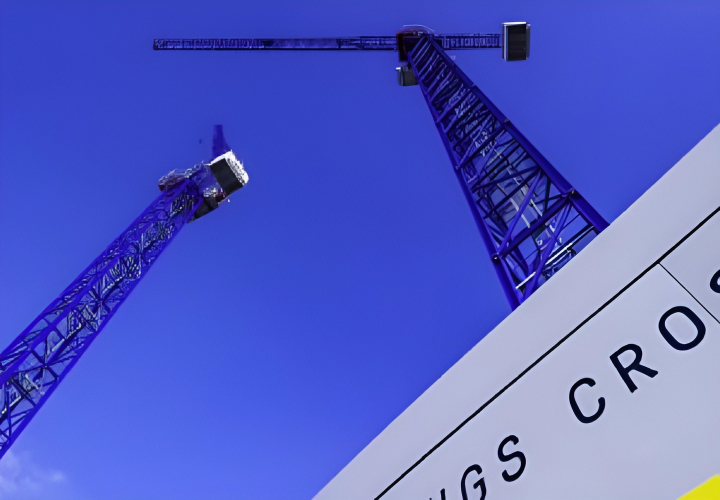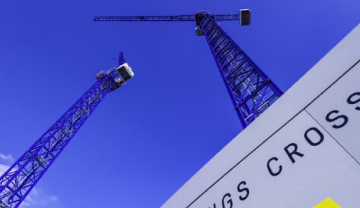
We know that a large number of our visitors here have a pretty good understanding of how tower cranes work, however most of you probably don’t. This post aims to enlighten those who are interested in learning a bit more about tower cranes and how they work without overcomplicating things.
A tower crane is an inverted L-shaped structure that is capable of lifting several tons of weight to great heights. Despite being able to lift a lot of weight, a tower crane is actually extremely simple in both its construction and operation. The way a tower crane functions has a lot to do with its components.
Base Support – This is located at the bottom of the tower and is often either attached to a concrete pad on the ground, a steel grillage or ballasted chassis set on the ground, or on top of an existing structure.
Tower – This can also be referred to as the mast. It is the vertical element that gives the crane its height. This component extends from the ground up, and it supports other elements like the cab, the hook, and the counterweights.
Turntable – This is the part of the crane that allows the arm to rotate. The turntable is the part of the crane that gives the jib its range of motion.
Operator’s Cab – This is where the operator sits while working with the tower crane. It contains the computer and joysticks as well as the control systems.
Jib or Working Arm – This is the horizontal component sticking out from the top of the tower. This element’s purpose is to support and position the load being lifted.
Trolley and Hook Block – The trolley is the piece that moves back and forth across the jib. The hook block serves as a pulley system that allows the hook to travel up and down the tower.
Counter Jib – This extends in the opposite direction of the jib and helps the tower crane maintain its balance.
Counterweight – This balances the load of the lift. Without a counterweight the load capacity would have to be significantly lower to maintain stability. Some common counterweight materials include reinforced concrete and steel.
Tower cranes are usually assembled up to a certain height by means of mobile cranes. Since the reach of a mobile crane is limited, a tower crane is equipped to build itself by adding columns to its tower. In order to achieve this, a climbing frame is bolted around the top section. The slewing unit and all components above are then unbolted from the tower and fixed to the climbing frame, which elevates those using large hydraulic rams.
There are various different types of tower crane, and whilst the working principle of tower cranes remains the same across all their types, their design has been compacted to suit the lack of operational space.
– Luffing cranes are designed with jibs that can be raised at an angle to reduce the slewing radius.
– Derrick cranes are designed to fit on rooftops and do not require tall masts to support them.
– Travelling tower cranes are mounted on rails that enable them to move laterally. Their load-bearing capacities are therefore lower than the traditional, horizontal jib tower cranes.
With advancements in technology and improvement of materials, cranes have become even safer and more compact in recent times. As high rises increase their presence on skylines around the world, this vast variety of cranes has become an indispensable part of our lives.
Tower Cranes UK can provide a hire service individually suited to each customer’s requirements. From concept, through to installation and dismantle operations, safety to all involved is our highest priority, providing peace of mind to each of our clients.
